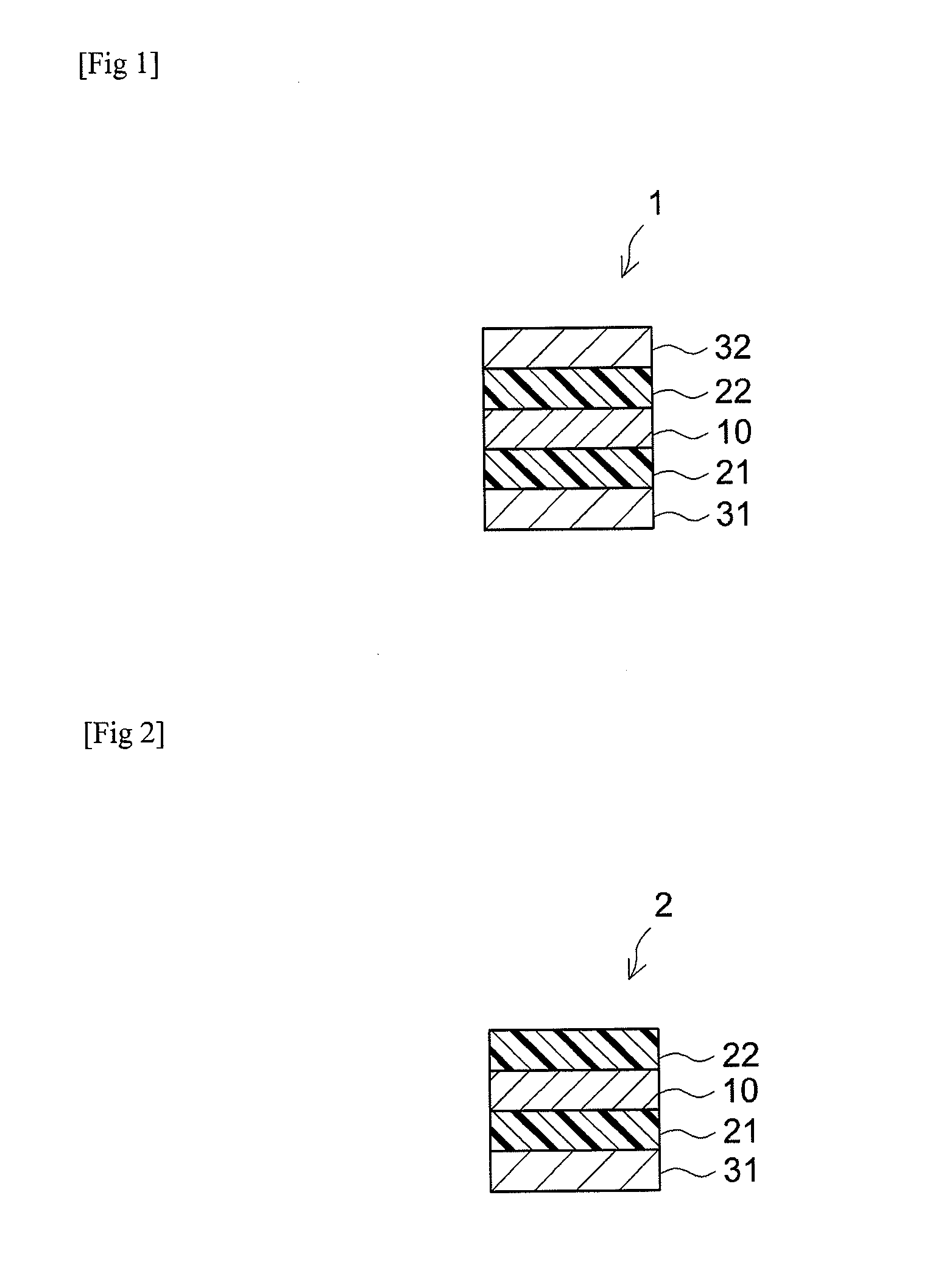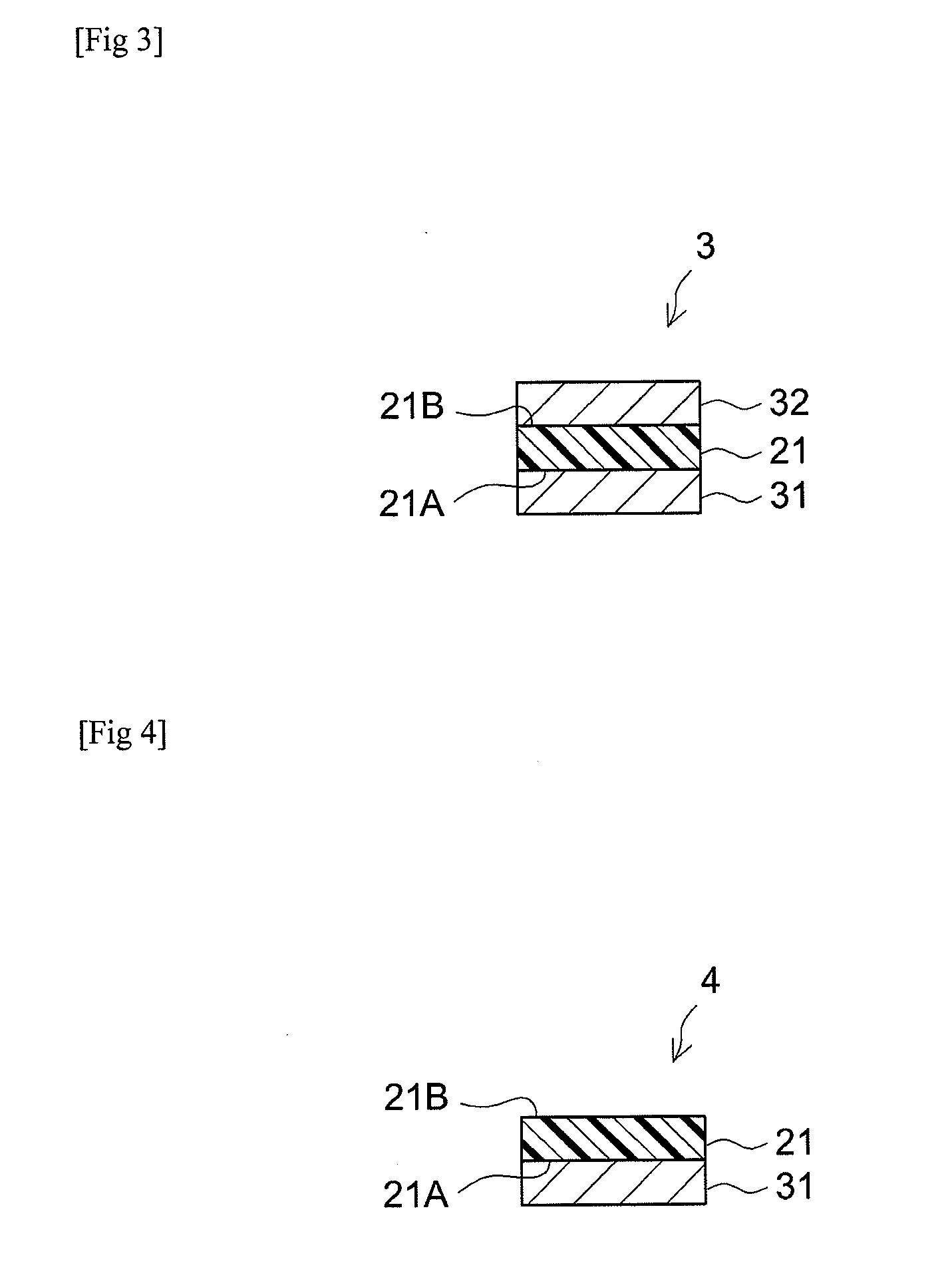Pressure-sensitive adhesive sheet
a technology of pressure-sensitive adhesives and adhesive sheets, which is applied in the direction of film/foil adhesives, coatings, transportation and packaging, etc., can solve the problems that psa sheets formed using such non-toluene-based psa compositions tend to have lower adhesion performance, and achieve superior adhesion, reduce the emission of toluene, and improve adhesion
- Summary
- Abstract
- Description
- Claims
- Application Information
AI Technical Summary
Benefits of technology
Problems solved by technology
Method used
Image
Examples
example 1
[0135]35 parts of ion exchange water were placed in a reaction vessel equipped with a stirrer, thermometer, reflux condenser, dropping device and nitrogen gas feed tube followed by stirring for 1 hour or more at 60° C. while introducing nitrogen gas. 0.1 parts of 2,2′-azobis[N-(2-carboxyethyl)-2-methylpropionamidine]hydrate (Wako Pure Chemical Industries, trade name “VA-057”) were added thereto as a polymerization initiator.
[0136]A monomer starting material was prepared by adding 90 parts of n-butylacrylate (BA), 10 parts of 2-ethylhexyl acrylate (2-EHA), 4 parts of acrylic acid (AA), 2 parts of sodium polyoxyethylene lauryl sulfate (emulsifier) and 0.05 parts of dodecanethiol (chain transfer agent) were added to 40 parts of ion exchange water and emulsifying.
[0137]This monomer starting material emulsion was gradually dropped into the reaction liquid held at 60° C. over the course of 4 hours followed by emulsification polymerization. Following completion of dropping of the monomer s...
example 2
[0141]70 parts of n-butyl acrylate (BA), 27 parts of 2-ethylhexyl acrylate (2-EHA), 3 parts of acrylic acid (AA), 0.1 part of 2-hydroxyethyl acrylate and ethyl acetate were placed in a reaction vessel equipped with a condenser, nitrogen gas feed tube, thermometer and stirrer followed by introducing nitrogen gas while stirring gently to replace the inside of the vessel with nitrogen. This reaction liquid was heated to 70° C. followed by the addition of 0.2 parts of AIBN (polymerization initiator). A polymerization reaction was carried out for 8 hours while holding the system at 70° C. to obtain an ethyl acetate solution of an acrylic polymer having a weight average molecular weight of 70×104.
[0142]20 parts of an tackifier resin (Rika TAC, trade name: “RikaTAC PCJ”, polymerized rosin ester resin having a softening point of 128° C.) and 2 parts of a crosslinking agent (Nippon Polyurethane Industry, trade name: “Coronate L”, isocyanate-based crosslinking agent) were added to this soluti...
example 3
[0144]A UV-curable, solvent-free silicone-based release agent was coated onto a PE layer of a substrate obtained in the same manner as Example 1 instead of the mixture of release agent and catalyst of Example 1. The amount of the release agent coated was 1.3 g / m2. After coating the release agent, the release agent was irradiated with ultraviolet light under conditions of luminance of 2 W / cm2 and a line speed of 70 m / min using a high-pressure mercury lamp for the light source to cure the release agent and obtain a release liner B.
[0145]A double-sided PSA sheet, provided with a PSA layer composed of a water-dispersed PSA composition, was obtained in the same manner as Example 1 with the exception of using the release liner B instead of the release liner A.
PUM
| Property | Measurement | Unit |
|---|---|---|
| Temperature | aaaaa | aaaaa |
| Length | aaaaa | aaaaa |
| Mass | aaaaa | aaaaa |
Abstract
Description
Claims
Application Information
 Login to View More
Login to View More - R&D
- Intellectual Property
- Life Sciences
- Materials
- Tech Scout
- Unparalleled Data Quality
- Higher Quality Content
- 60% Fewer Hallucinations
Browse by: Latest US Patents, China's latest patents, Technical Efficacy Thesaurus, Application Domain, Technology Topic, Popular Technical Reports.
© 2025 PatSnap. All rights reserved.Legal|Privacy policy|Modern Slavery Act Transparency Statement|Sitemap|About US| Contact US: help@patsnap.com



